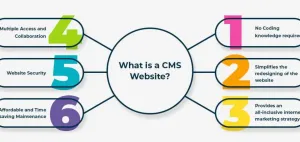Ampache is a powerful, self-hosted music streaming server and media management system designed for tech-savvy users who value control over their data and customization options. Whether you’re a developer looking to stream your music library or a system administrator deploying it for a community, Ampache provides a robust platform for hosting and managing media with advanced features like APIs and playlist management. This guide will walk you through key steps to install, configure, secure, troubleshoot, and maximize the capabilities of Ampache.
Installing Ampache
📦 Docker/Docker Compose Setup
Docker is the easiest and most modular way to deploy Ampache. Below is a docker-compose.yml file configured to set up Ampache with persistent storage and MySQL as its database.
version: '3.9'
services:
ampache:
image: ampache/ampache:latest
container_name: ampache
ports:
- "8080:80"
volumes:
- ./ampache_data:/var/www/html/config
environment:
- MYSQL_ROOT_PASSWORD=root-password
- MYSQL_DATABASE=ampache
- MYSQL_USER=ampache
- MYSQL_PASSWORD=ampache-password
- TZ=UTC
depends_on:
- db
db:
image: mysql:8.0
container_name: ampache_db
environment:
- MYSQL_ROOT_PASSWORD=root-password
- MYSQL_DATABASE=ampache
- MYSQL_USER=ampache
- MYSQL_PASSWORD=ampache-password
volumes:
- ./mysql_data:/var/lib/mysql
To deploy Ampache using Docker Compose, execute the following commands:
mkdir ampache && cd ampache
## Save the docker-compose.yml file
nano docker-compose.yml
## Start the containers
docker-compose up -d
## Verify the containers are running
docker ps
Access Ampache in your browser at http://<your-server-ip>:8080.
🚀 Manual Installation
For users preferring manual installation on a Linux server, follow these steps:
## Update and install required dependencies
sudo apt update && sudo apt install -y apache2 mariadb-server php php-mysql unzip wget
## Download Ampache
wget https://github.com/ampache/ampache/releases/latest/download/ampache.zip
## Extract and move to the web directory
unzip ampache.zip
sudo mv ampache /var/www/html/ampache
## Set permissions
sudo chown -R www-data:www-data /var/www/html/ampache
sudo chmod -R 755 /var/www/html/ampache
## Enable Apache modules and restart the service
sudo a2enmod rewrite
sudo systemctl restart apache2
Complete the setup by following the instructions on the Ampache web installer at http://<your-server-ip>/ampache.
Configuring Nginx as a Reverse Proxy
🌐 Nginx Configuration
To route traffic through Nginx, create a new server block for Ampache.
sudo nano /etc/nginx/sites-available/ampache
Add the following configuration:
server {
listen 80;
server_name yourdomain.com;
location / {
proxy_pass http://localhost:8080;
proxy_set_header Host $host;
proxy_set_header X-Real-IP $remote_addr;
proxy_set_header X-Forwarded-For $proxy_add_x_forwarded_for;
}
}
Enable the configuration and restart Nginx:
sudo ln -s /etc/nginx/sites-available/ampache /etc/nginx/sites-enabled/
sudo nginx -t
sudo systemctl reload nginx
🔒 SSL/TLS Setup
Secure your Ampache instance with Let’s Encrypt:
sudo apt install certbot python3-certbot-nginx
## Obtain an SSL certificate
sudo certbot --nginx -d yourdomain.com
## Verify automatic renewal
sudo certbot renew --dry-run
Logging and Debugging Ampache
🗃️ Enabling Debug Logs
To enable debug-level logging, edit Ampache’s config/ampache.cfg.php file:
sudo nano /var/www/html/ampache/config/ampache.cfg.php
Set the following configuration:
log_level = "debug"
📄 Viewing Logs
For Docker setups, view logs using:
docker logs ampache
For manual installations, inspect logs at:
cat /var/log/apache2/error.log
🛠️ Troubleshooting Common Issues
-
Database connection errors: Ensure the database credentials in
ampache.cfg.phpmatch your MySQL configuration. -
Permission errors: Verify the web server has access to the Ampache directory with proper ownership and permissions.
📤 Exporting Logs
To export logs to an external system like ELK Stack, use a tool like filebeat to ship logs from /var/log/apache2/ or Docker logs.
Backup and Restore
🗂️ File-Based Backups
Backup key directories, including config and media files:
tar -czvf ampache_backup.tar.gz /var/www/html/ampache/config /var/www/html/ampache/media
🔄 Database Backups
Export Ampache’s database:
mysqldump -u ampache -p ampache > ampache_db_backup.sql
Restore the database:
mysql -u ampache -p ampache < ampache_db_backup.sql
📅 Automated Backup Scripts
Automate backups using a cron job:
echo "0 3 * * * /usr/bin/mysqldump -u ampache -p'yourpassword' ampache > /backup/ampache_$(date +\%F).sql" | crontab -
Updating and Upgrading Ampache
⬆️ Updating Docker Images
To update Ampache when using Docker:
## Pull the latest image
docker-compose pull
## Recreate and restart containers
docker-compose up -d
🛠️ Manual Updates
For manual installations, download the latest release from Ampache’s GitHub, replace the files, and follow the upgrade prompts in the web UI.
🔍 Checking for Updates
Within the Ampache admin interface, check for updates or subscribe to release notifications on GitHub.
Leveraging Ampache’s Unique Features
🔧 Enabling APIs
Activate Ampache’s API by editing the configuration file:
api_enabled = "true"
Test the API using curl:
curl -X POST -d "username=youruser&password=yourpass" http://yourdomain.com/server/xml.server.php
🌟 Advanced Configurations
-
Enable Transcoding: Configure FFmpeg in
ampache.cfg.phpfor on-the-fly audio transcoding. -
Third-Party Integration: Connect Ampache with tools like Kodi or Subsonic clients by enabling respective options in the admin interface.
Wrapping Up
This guide has provided detailed instructions to install, configure, secure, and manage Ampache for self-hosted media streaming. By following these steps, you can take full advantage of Ampache’s flexibility, robust feature set, and control over your media. Start experimenting with its APIs, advanced configurations, and integrations to unlock even more possibilities!




